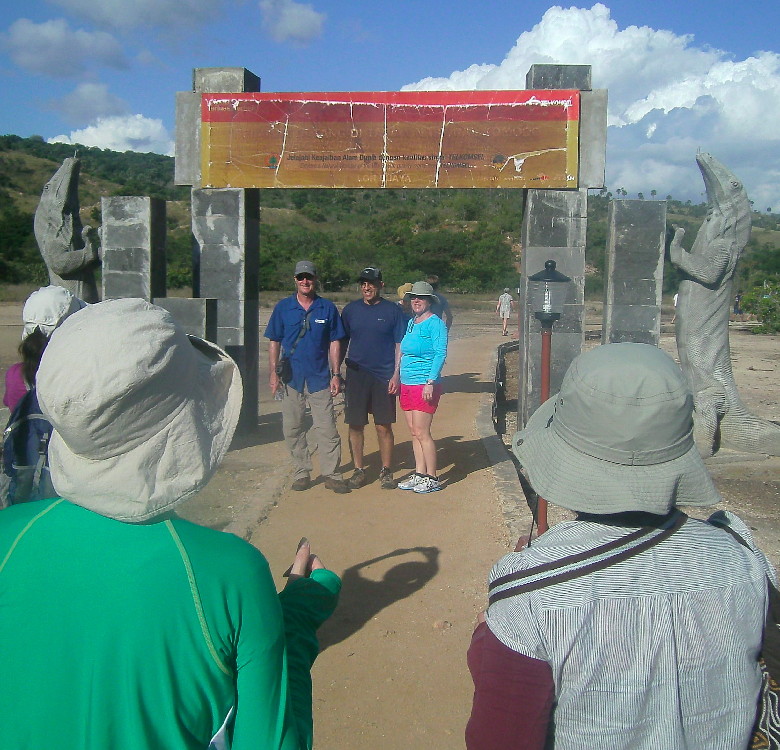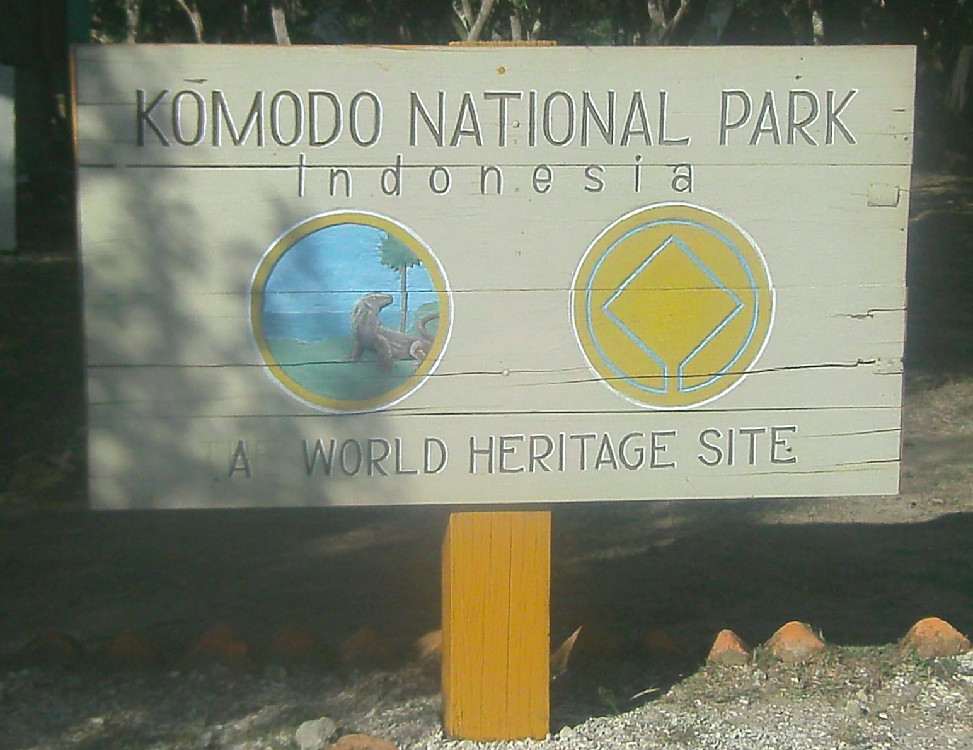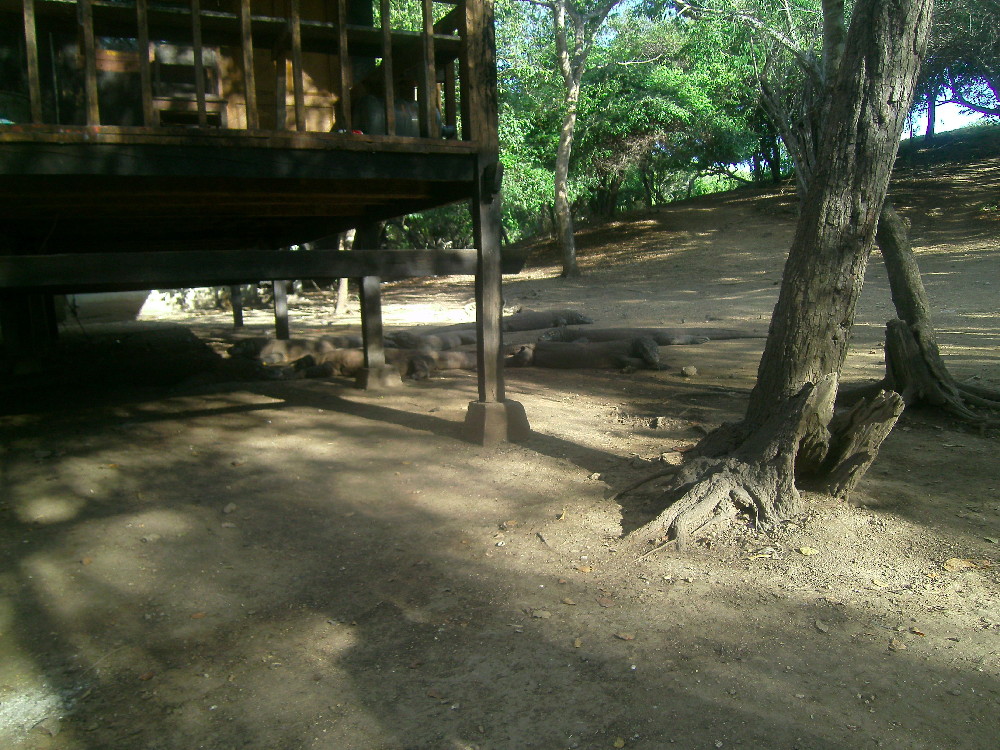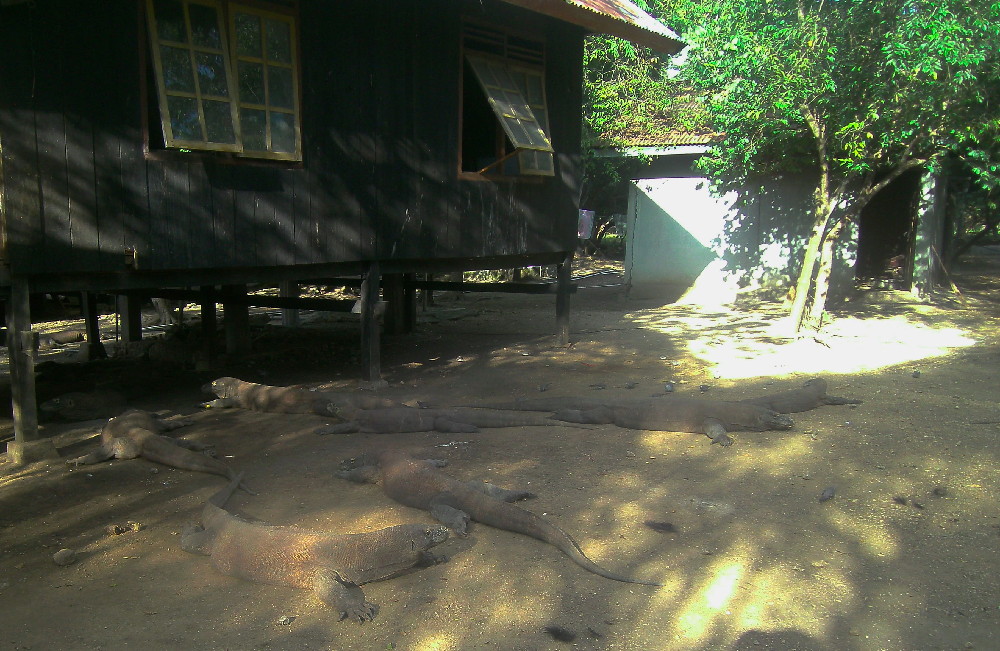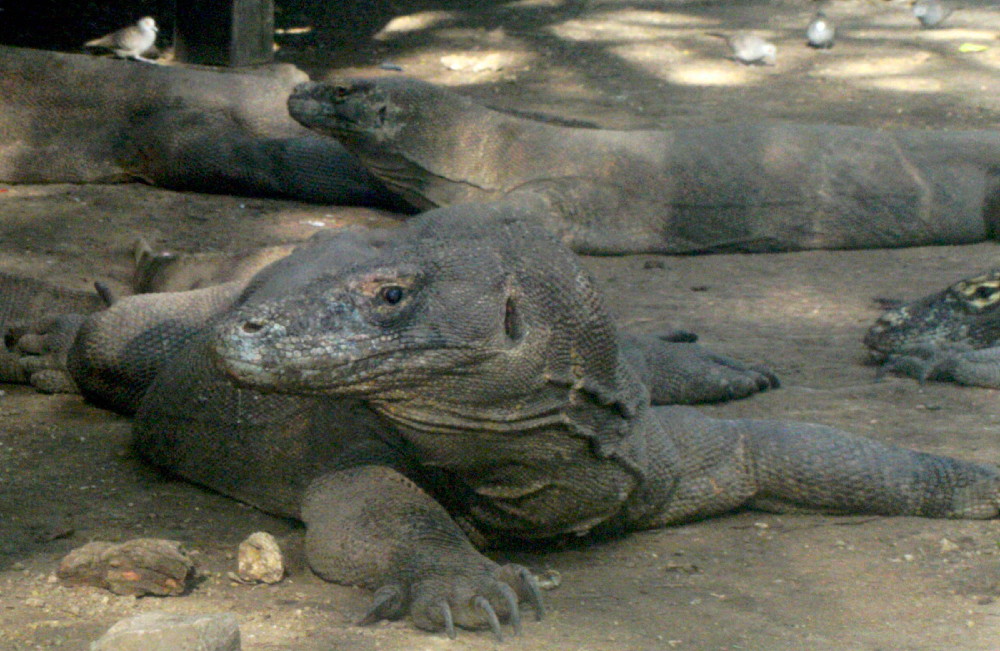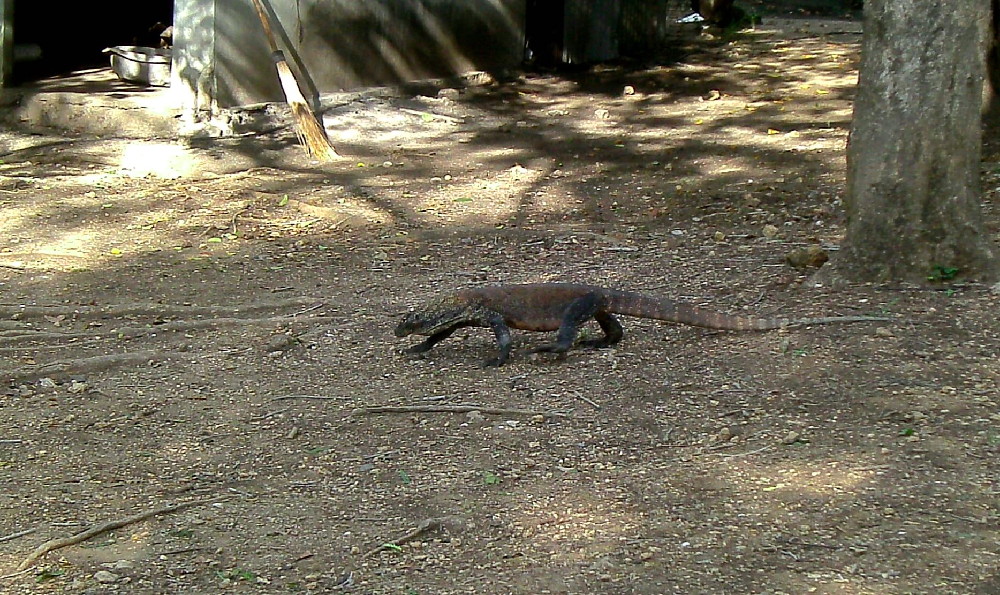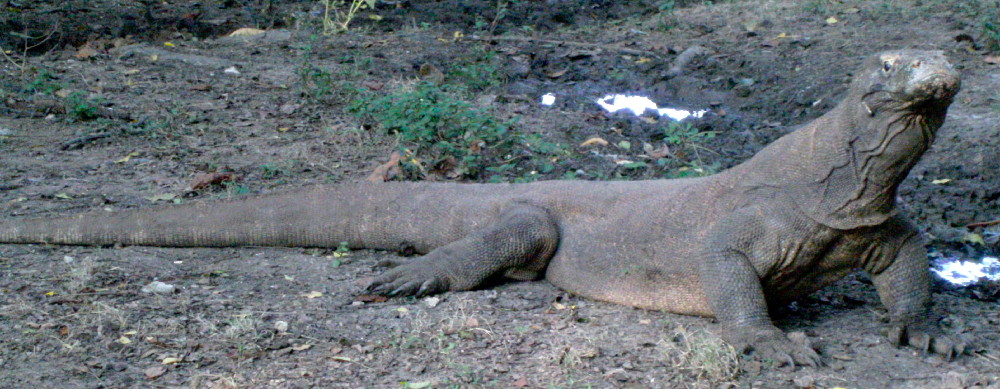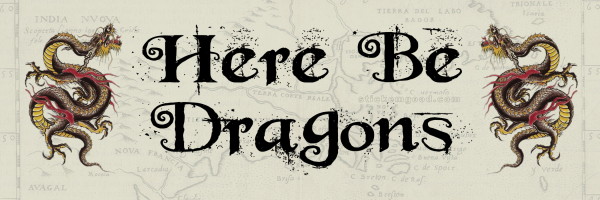
20 MAY 2016
| |
|
THE FIRST THING WE DID (before any diving)
We saw a group of adults, a juvenile and a nest.
We learned that like turtles,
We also saw some monkeys and a native bird much like a chicken, called a scrubfowl.
The dragons we saw were about nine feet long.
| |
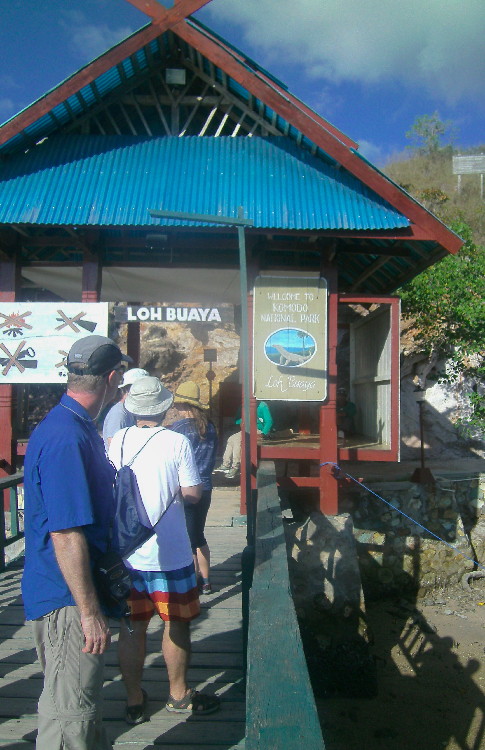
|
The dock at Komodo National Park,
There are three major islands:
|
|
As well as being home
|
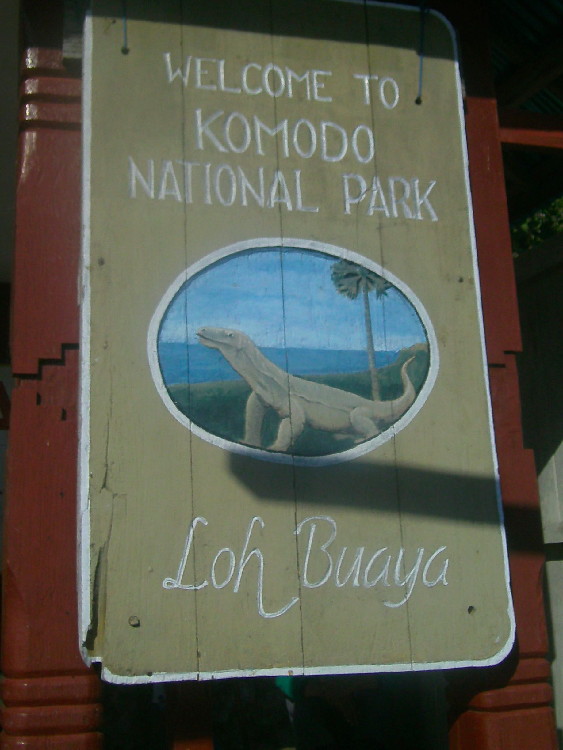
|
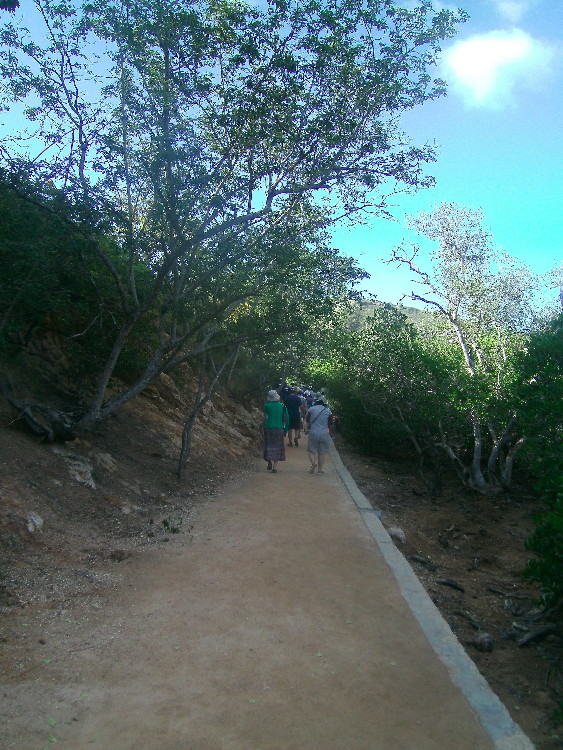
The long path back towards the Park office and grounds (restrooms, etc.) |
Treks on Rinca Island start from
The shortest trek takes 30 minutes.
The one-hour
For the best
|
|
(IT WAS SO HOT that we all opted for the "short" tour, which was plenty.)
Gate and sculpture (still not there yet; keep walking) . . .
More signage and some skulls (from dragon kills)
Signs of a different sort
| |
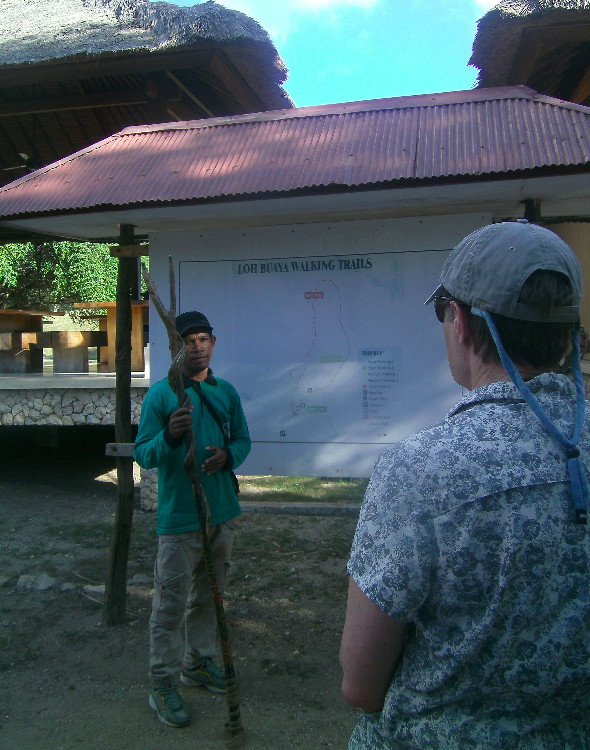
|
The Ranger (guide)
|
|
These dragons collect around the cookhouse just like the
These are about nine feet long,
Another view of all the dragons around the cookhouse . . .
The BEST view . . .
We also saw a young dragon on the ground;
Young dragon . . .
. . . out for a stroll . . .
Mature dragon drinking from groundwater
| |
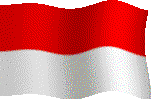




FINALLY SOME DIVING . . . HERE





